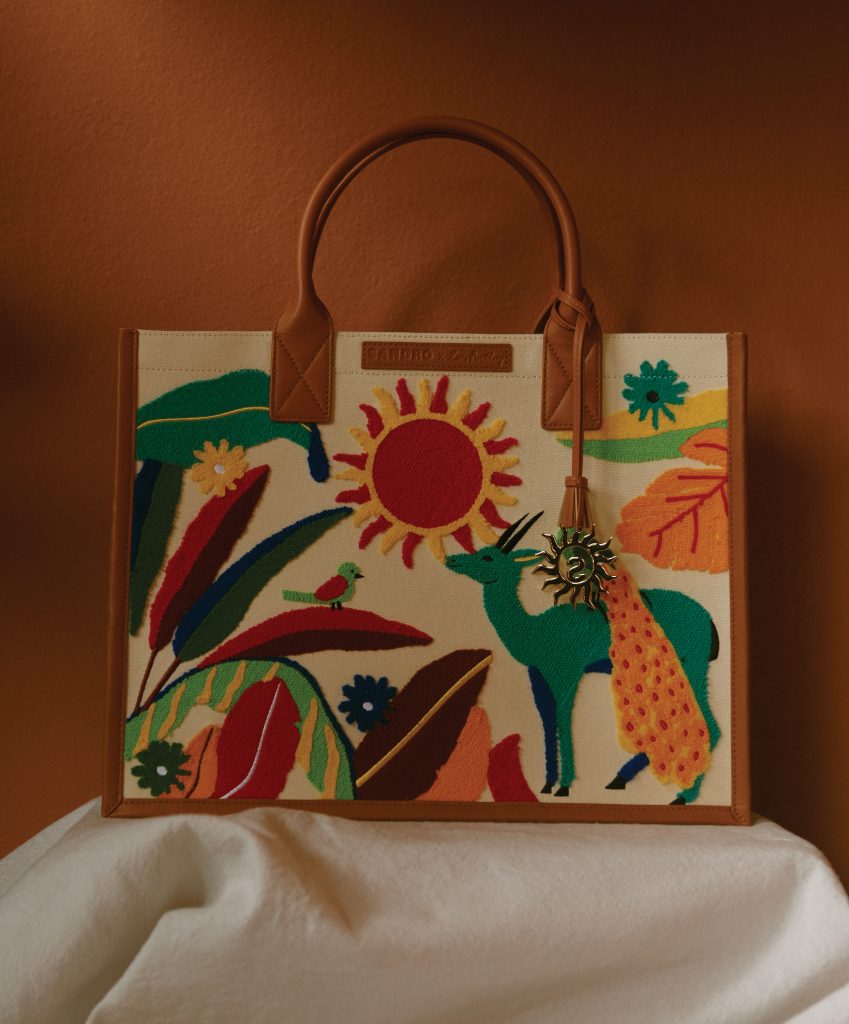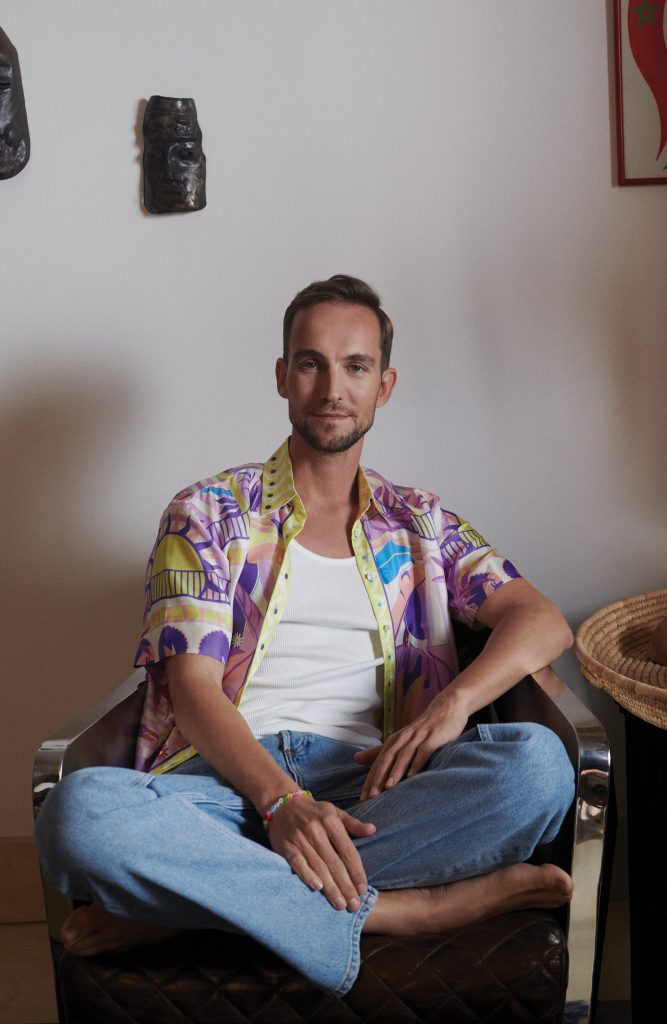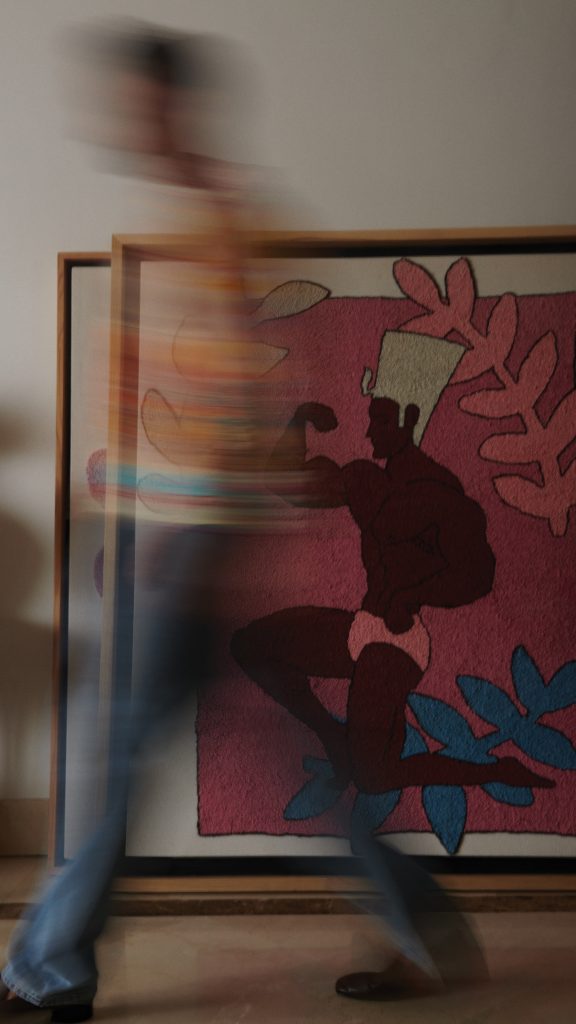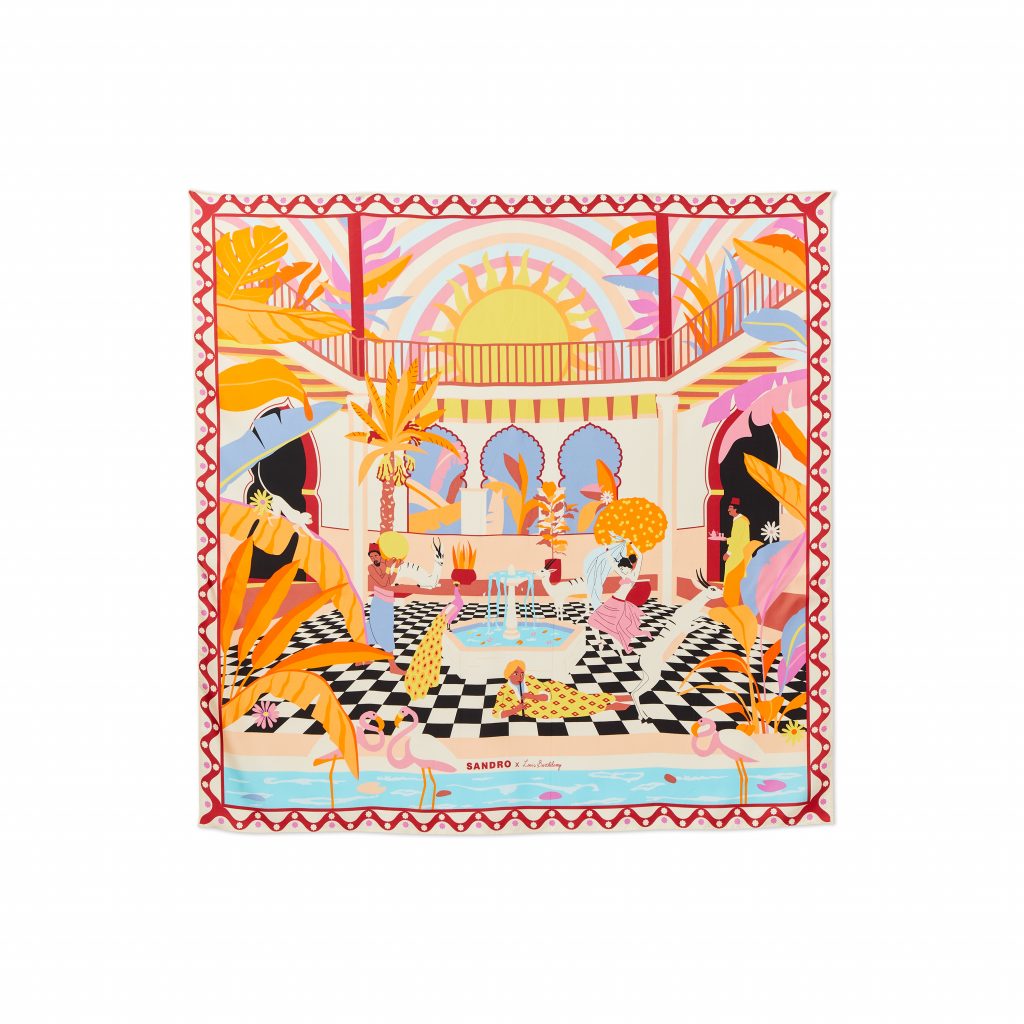Beauty comes in many forms. In French artist Louis Barthélemy’s capsule collection with Sandro founder and creative director Évelyn Chetrite, it is a love of place, of colour and especially of preserving centuries-old local craft. Zaneta Cheng reports

As the mercury continues to soar to unprecedented heights this summer, Moroccan native and founder and creative director of Sandro, Évelyne Chetrite, decided to join hands with French artist and designer Louis Barthélemy to inject some colour into this heat through their shared love of the north African country.
“I had seen Louis’s work many times and found that his colourful and poetic way of showcasing Morocco resonated with my vision. Creatively, my instincts guide my choices and I knew there was something to be done together,” Chetrite says. “I didn’t want a literal portrayal of Morocco but something more subtle, understated, yet joyful.”

From embroidered Kasbah bags to fluid silk shirts and scarves, and polyester bottoms, all the items in the capsule
collection share kaleidoscopic graphics inspired by Mohamed Ben Ali R’bati, the first modern painter of Morocco. For Barthélemy, like Chetrite, the project stemmed from a personal place. “We exchanged on a personal level, sharing our respective stories. I was struck by her attachment to Morocco, her birthplace, which resonated with my love for the country where I decided to settle myself eight years ago, when I left my in-house position at Dior in Paris,” Barthélemy recalls. “From that moment I knew I wanted this capsule to celebrate this common affection that we have for a place rich in heritage, crafts and sophistication.”

Given carte blanche to create the graphics that would be used across the collection, Barthélemy dug deep into his affection for the country he now calls home. “I’m struck by the chaos of the city, the complexity of its historical heritage and its constantly changing explosive demographic. What I like is the humanity, its warmth, humour and sweet philosophy that emanates from a people at the crossroads of worlds,” he explains. “There is a wisdom and propensity to appreciate the simple pleasures of life in this region that gives me a sense of calm. Then there’s the attachment to human values, rituals, spirituality and essential
elements of well-being.”

While Barthélemy and Chetrite worked on the colour palette, and themes of the graphics used – “We wanted something colourful and joyful, like the scenes from everyday life, the parties” says Chetrite – one element of Morocco they wanted to particularly draw out is the country’s traditional craftsmanship. For Chetrite, whose grandfather was a shirt tailor, her interest comes from her childhood. Barthélemy’s interest began in the haute couture ateliers of Dior during John Galliano’s tenure at the French fashion house. “It was a pleasure to discover all these crafts dedicated to creating a dream. Since then I’ve always valued the know- how and the dexterity of humans in my projects and sometimes in little-known countries where the crafts are just as sophisticated and refined,” he says. “I like to contribute on my small scale to highlight the beauty of little- known worlds.”

Of these little-known worlds, Barthélemy has created pieces with techniques like Khayameya, a traditional Egyptian textile art that involves hand-stitching colourful geometric patterns onto cotton or linen fabric. It’s given him experience working with craftsmen in the area – “at first it’s a dialogue and what follows are weeks, sometimes, of prototyping, before starting an artistic project and these relationships then become permanent professional friendships.”

One such collaborator is the Doum for Women cooperative, with whom Barthélemy had been working and experimenting with a year before Sandro approached him for a capsule collection. “I loved spending days
in the workshop with the craftswomen to observe their way of working. And when Sandro approached me, I tried to be a link between the women’s cooperative and the brand,” he says. The result is a bucket bag made of natural straw created using the passed-down art of basketry. The cooperative is also part of an initiative to empower women in rural Morocco, allowing them to become autonomous and financially independent through the craft.
Also see: Louis Vuitton bridges Korean pop culture with womenswear























































